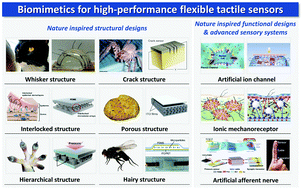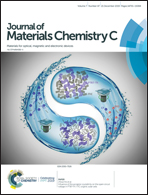Biomimetics for high-performance flexible tactile sensors and advanced artificial sensory systems
Abstract
Flexible tactile sensors have shown significant importance in various applications, including touch panels, artificial skins, human–machine interfaces, and wearable medical devices. Considerable progress has been achieved in the field of flexible tactile sensors in the last three decades through innovations in materials science and engineering. Recently, biomimetics, i.e., the mimicry of biological structures and functions, has emerged as a burgeoning area in tactile sensors, which has resulted in innovations in material design and device structure manipulation to imitate the intelligent tactile sensing features of the human skin. This review includes smart designs of structural materials and functional device architectures inspired by biology, which have opened new avenues to develop high-performance flexible tactile sensors and advanced artificial sensory systems. First, an overview of the fundamental working mechanisms and progress in tactile sensors over recent years is presented briefly. Then, we review tactile sensors with bioinspired structural features, including cracks, whiskers, and hierarchical, interlocked, porous, and bristle-like structures, which enable tactile sensors to demonstrate perceptive characteristics similar to the human skin, such as multifunctionality, directionality, and selectivity with ultrahigh sensitivity and a fast response. Thereafter, we discuss tactile sensors and recently developed artificial sensory systems with bioinspired functional features, which have enabled close emulation of the functional aspects of biological systems, such as biological ion channels, skin mechanoreceptors, and sensory neurons, for the fabrication of advanced human–machine interfaces. Finally, perspectives on the current challenges as well as a brief outlook are presented.

- This article is part of the themed collection: Recent Review Articles


 Please wait while we load your content...
Please wait while we load your content...